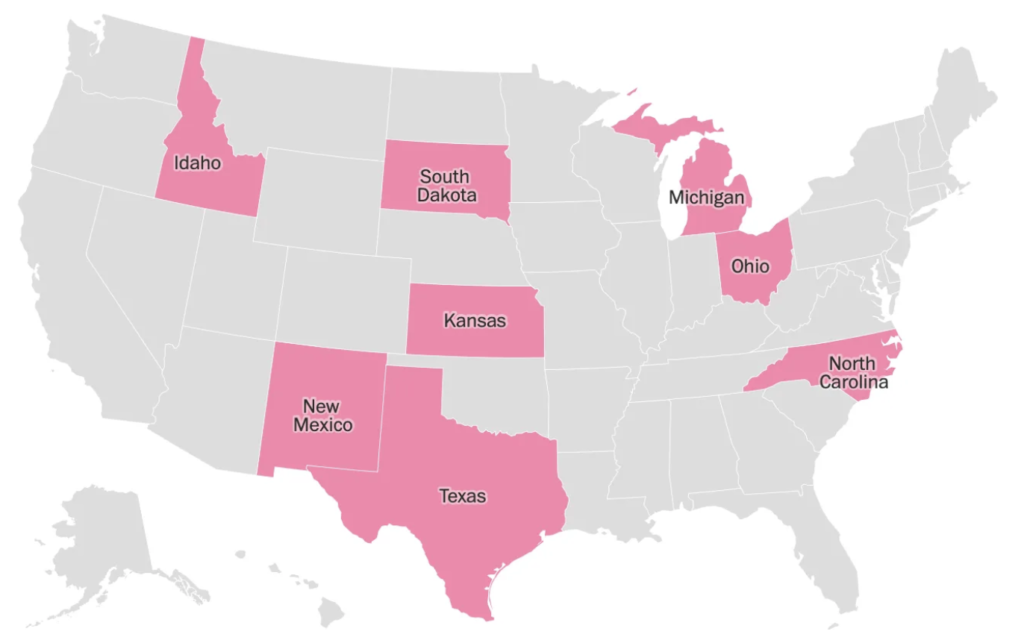
While no cases of human-to-human transmission have been recorded in the current H5N1 avian outbreak, scientists are concerned about its transmission speed in mammals and whether this might result in a mutated pathogen that can infect people more easily.
“H5N1 is (an) influenza infection, predominantly started in poultry and ducks and has spread effectively over the course of the last one or two years to become a global zoonotic – animal – pandemic,” said Dr Jeremy Farrar, the World Health Organization’s (WHO) Chief Scientist.
“The great concern, of course, is that in doing so and infecting ducks and chickens – but now increasingly mammals – that that virus now evolves and develops the ability to infect humans. And then critically, the ability to go from human-to-human transmission,” Farrar told a media briefing in Geneva last week.
At the WHO’s global media briefing on Wednesday, WHO epidemiologist Dr Maria Van Kerkhove that “we have not seen human-to-human transmission in the recent cases, and I think that’s really important because there’s a lot of news right now on influenza”.
Spread in US dairy herds
H5N1 has been detected in cattle in 33 dairy herds in eight US statesaccording to the latest US Centers for Disease Control and Prevention (CDC) report on 24 April. Remnants of the virus have also been detected in raw milk.
US CDC described “this degree of spread outside of birds & poultry is unprecedented and concerning” and the US Department of Agriculture has restricted interstate cow transport to limit the spread of the disease.
One human infection has been reported in a Texas, cattle farm worker in late March. Genomic sequencing from this patient found that each individual gene segment was “closely related to viruses detected in dairy cattle” in Texas, according to US CDC.
“While minor changes were identified in the virus sequence from the patient specimen compared to the viral sequences from cattle, both cattle and human sequences maintain primarily avian genetic characteristics and, for the most part, lack changes that would make them better adapted to infect mammals,” it noted.
“There are no markers known to be associated with influenza antiviral resistance found in the virus sequences from the patient’s specimen and the virus is very closely related to two existing candidate vaccine viruses that are already available to manufacturers, and which could be used to make vaccine if needed,” added.
Overall, the genetic analysis “supports CDC’s conclusion that the human health risk currently remains low”.
US public officials said that Tamiflu, an antiviral effective for treating influenza, is stockpiled for a potential emergency, NPR reported. Some candidate vaccines for H5N1 are also in development and there are some options for enhancing present supply.

Historically, human cases of the H5N1 virus are so far very rare, with only 889 cases reported to the WHO since 2003, all involving people who came in contact with infected animals.
But virus mortality reaches 52%, which is “extraordinary high”, said Farrar, who urged close monitoring and investigation of the outbreaks in US cattle by public health authorities “because it may evolve into transmitting in different ways”.
“Do the milking structures of cows create aerosols? Is it the environment which they’re living in? Is it the transport system that is spreading this around the country?” he asked. “This is a huge concern and I think we have to … make sure that if H5N1 did come across to humans with human-to-human transmission that we were in a position to immediately respond with access equitably to vaccines, therapeutics and diagnostics.”
Different strains, different severity
Though avian influenza viruses naturally occur in wild water birds, some variants are also known to develop the ability to infect other animals. The virus has multiple variants of differing severity and transmission possibilities.
A case of human infection with the much milder strain of avian influenza virus (H9N2) was confirmed in Viet Nam on 9 April by the International Health Regulations (IHR) National Focal Point, as WHO reported. The same virus strain was also detected in three patients in China,according to the Centre for Health Protection of Hong Kong.
H9N2 usually results in mild infections of the upper respiratory tractmostly affecting children. It is a low pathogenic avian influenza, usually showing only mild disease in chickens and other poultry, according to the US CDC.
Systems in place to respond

“We are concerned about this particular virus because we know influenza has the potential to cause epidemics,” said Van Kerkhove. “That’s why we have a global system in place to monitor detect, to rapidly do risk assessments to look at viruses that could potentially be used in vaccines as we go forward.”
However, she expressed confidence that risks of an outbreak in human populations remain low and that existing WHO surveillance systems competent to monitor any developments.
”We have a global influenza surveillance and response system that’s been in place for 70 years. And within this systems, there are strong surveillance components, made up of labs around the world, made up of many partner agencies,” she assured the media briefing.
Dr Michael Ryan, WHO’s Executive Director of the Health Emergencies Programme, backed Van Kerkhove: “We have a system that can measure and we have countermeasures ready to go should anything happen and that’s all we can do in public health.”
“We can’t stop living because viruses threaten us. What we can do is be ready to respond,” he said,.
The Pandemic Influenza Preparedness Framework “has been in place again for 20 years and has provided a framework for collaboration between WHO labs and industry for the sharing of material, for the sharing of vaccines”, added Ryan.
Image Credits: Charlotte Kesl/ World Bank.
Combat the infodemic in health information and support health policy reporting from the global South. Our growing network of journalists in Africa, Asia, Geneva and New York connect the dots between regional realities and the big global debates, with evidence-based, open access news and analysis. To make a personal or organisational contribution click here on PayPal.






